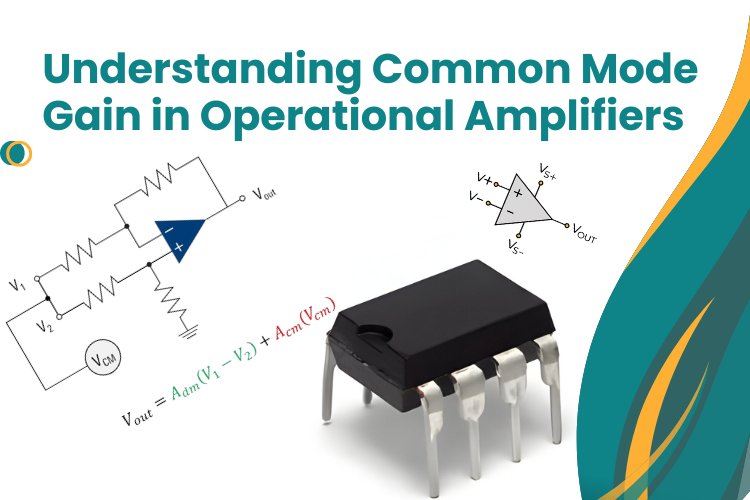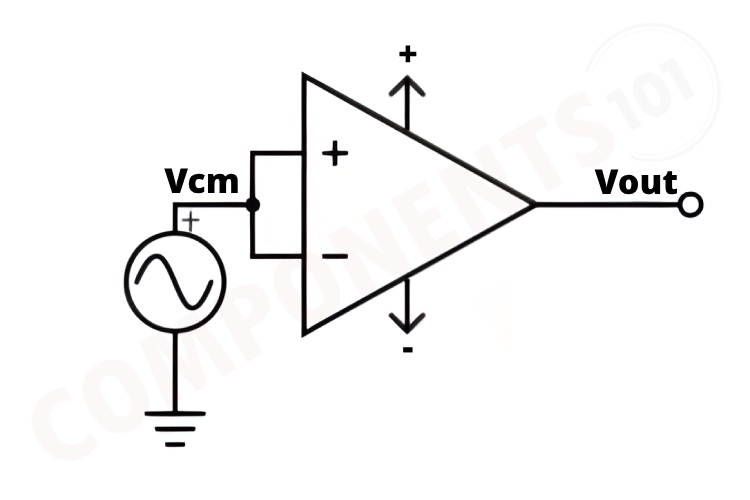Optimized at frequencies beyond traditional industry targets to support emerging applications
Understanding Common Mode Gain in Operational Amplifiers

Operational amplifiers (op-amps) are fundamental components in modern electronic circuits, they can be found on almost all electronic devices. Op-amp has many critical parameters that need to be considered before using it in a circuit. Those include input Offset Voltage, Input Bias Current, Input Offset Current, Common Mode Rejection Ratio (CMRR), Power Supply Rejection Ratio (PSRR), Slew Rate and many more. In a previous article, we looked into the Slew Rate in Op-Amp. Just like the slew rate, another important parameter of an op-amp is the common mode gain. In this article, we will explore what common mode gain is, why it matters, and how it impacts the functionality of op-amps in various applications.
What is Common Mode Gain?
Common mode gain (Acm) refers to the amplification of signals that are common to both inputs of an operational amplifier. Ideally, an op-amp should only amplify the difference between the two input signals, which is called differential gain Ad, and completely reject any signals that are common to both inputs. That is ideally the output of an opamp must be zero Acm. However, in practical scenarios, op-amps do exhibit some amplification of the common mode signal, which is called the common mode gain.
Importance of Common Mode Gain
Understanding common mode gain is crucial because it directly impacts the performance and accuracy of an op-amp in real-world applications. High common mode gain can introduce errors in the output signal, affecting the integrity of the amplified signal. It is also important to effectively reject the common mode signals, including noise and interference, for the accurate amplification of differential signals. In precision measurement and instrumentation, even small amounts of common mode gain can lead to significant measurement errors.
Calculating Common Mode Gain
If we want to calculate the common mode gain of an op-amp, all we have to do is drive both the inverting and non-inverting inputs from the same source and then find the ratio between the output voltage Vout and the common mode voltage, since both inputs are driven by the same voltage. The image below shows the circuit diagram for the same experiment.

This can be expressed with the formula,
Common mode gain Acm=VoutVcm
The common mode gain of an op-amp is typically very small compared to its differential gain. It can be quantified using the common mode rejection ratio (CMRR), which is defined as the ratio of the differential gain (Ad) to the common mode gain (Acm):
CMRR=AdAcm
A high CMRR indicates a good rejection of common mode signals, which is desirable in most applications.
Factors Affecting Common Mode Gain
Several factors influence the common mode gain of an op-amp:
- Op-Amp Design: The internal architecture and design of the op-amp, including transistor matching and biasing, play a significant role.
- Power Supply: Variations in the power supply voltage can affect the common mode gain.
- Temperature: Changes in temperature can impact the characteristics of the internal components of the op-amp, thereby affecting the common mode gain.
- External Components: The design and layout of external circuitry, including resistors and capacitors, can influence the common mode gain.
How to Minimize the Implications of Common Mode Gain
To minimize the impact of common mode gain in practical applications, we can take several approaches:
- Use High CMRR Op-Amps: Selecting op-amps with a high CMRR specification can significantly reduce common mode gain issues.
- Circuit Design: Proper circuit design techniques, such as differential signaling and balanced layouts, can help mitigate common mode interference.
- Shielding and Grounding: Implementing effective shielding and grounding practices can reduce external noise and interference that contribute to common mode signals.
- Feedback Networks: Designing appropriate feedback networks can enhance the differential gain while minimizing the common mode gain.
Conclusion
Common mode gain is a critical parameter in the performance of operational amplifiers, impacting signal integrity, noise rejection, and precision in various applications. By understanding and addressing the factors that influence common-mode gain, we can design more robust and accurate electronic systems. Whether in simple amplification circuits or complex instrumentation, managing common mode gain is essential for achieving optimal performance from op-amps.








